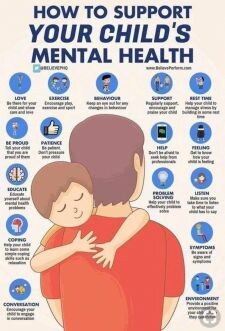Mental Health & Wellbeing Team
Miss Louise Powell
As Mental Health & Wellbeing /PSHE lead I work with staff to promote an inclusive curriculum that encourages children to develop their own personal, social and emotional wellbeing. I work alongside key members of staff and the Pastoral team to identify children who may be struggling and require additional pastoral, social or emotional support.
The children in school are able to come and see me or a member of the Pastoral Team if they need to talk, so please encourage your child to do this.
I also oversee the school Values programme, ensuring monthly values are embedded and communicated to parents. I work with the kitchen and Senior Lunchtime Supervisor to ensure lunchtimes are a healthy and enjoyable part of the school day. I ensure the behaviour policy is embedded and support staff are promoting good behaviour through the school’s systems and structures.
Mrs Stephanie Kimber
The SENCO is responsible for pupils with Special Educational Needs (SEN)
Key responsibilities include:
-
Coordinating provision for children with SEN
-
Liaising with and advising teachers
-
Maintaining and overseeing records of all children with SEN
-
Liaising with parents and carers
-
Monitoring pupil progress of identified groups through assessment data
The Senco will work closely with a range of external agencies who offer support, advice and guidance and make referrals to them. These include Surrey County Council services such as educational psychologists and specialist teachers. Specialist teachers provide advice and support for pupils with a range of needs. These include those who have learning difficulties, sensory or physical needs, those with EAL or those who need support with a range of behaviour issues. Other agencies include health professionals such as the school nurse and paediatricians.
Mrs Jo Harrup
The role of the Designated Safeguarding Lead was specified in the Children Act and ensured the every organisation had a “named person” for safeguarding children and young people. The Designated Safeguarding Lead has a responsibility at both a strategic level within the organisation and on a day to day basis.
Key Aspects of the Designated Lead role includes:
-
Making sure all staff are aware how to raise safeguarding concerns
-
Ensuring all staff understand the symptoms of child abuse and neglect
-
Referring any concerns to social care
-
Monitoring children who are the subject of child protection plans
-
Maintaining accurate and secure child protection records
Mrs Ambreen Ali
At Barnsbury, we strongly believe that the best outcomes for young children occur when parents/carers work in partnership with our school.
Your first line of support for learning related issues should always be your child’s Class teacher who may decide with you that the Home School Link Worker support is appropriate.
Alex Hemming
An ELSA is an Emotional Literacy Support Assistant. A teaching assistant who has received additional training and has experience of working with children. ELSA’s are trained and regularly supervised by the Educational Psychologist in the local area. An ELSA Is a warm and caring person who wants to help your child feel happy in school. The aim is to help try and remove barriers to learning and to have happy children in school and at home. An ELSA can help with self-esteem, social skills, emotions, anxiety, relaxation techniques and more.
[image src="/assets/c887f57ef7/ResizedImage214156-Elsa-support.png" id="238" width="214" height="156" class="center ss-htmleditorfield-file image"]
Please talk to the class teacher if you have concerns about your child and feel they may need some support from Mrs Hemmings our ELSA.
Worry Monsters
Worry Monsters Barnsbury Primary School first introduced worry monsters to our teaching and learning practice in school in 2018. We placed them in the schools corridors and held an assembly to explain them to the children. In the autumn term this year, as children were only accessing their bubble classrooms and not the corridors, we purchased a worry monster for each class. Since their introduction, they have proven to be an incredibly useful resource, allowing children to share worries in a confidential manner, when they don’t feel they have a voice or have difficulty explaining and have helped staff identify children’s anxieties and concerns that would otherwise go unnoticed.
What is a worry monster?
Worry Monsters are used to help children to resolve their worries. When a worrying or troubling thought comes into the child's mind they can write it down, or draw a picture on a piece of paper and feed it to the monster or puppet. The idea is, that the worry monster eats the problem up. The children feel they have got it “off their chest” and you, as the grown up, have an idea what is going on inside their head. Then, can discuss their concern in a supportive way, to further reassure the child and ease their mind.
How do you make a worry monster box?
Now in Lockdown we thought you at home may like to make a worry monster box with your child/ren. You can purchase them on line, simply search for WORRY MONSTER or failing that, you might decide to make one. Maybe use an empty tissue box to make the monster but any box would work as long as you can cut out a mouth. Allow the children to decorate the outside of the box to represent the monster, sticking arms and feet on it. Talk about worries or “thinking” with your child/ren and have them identify some worries, thoughts, frustrations, etc. Have the child write or draw the worries on pieces of paper and pop it in the box.
How to Support your Child's Mental Health

Self-Esteem and Confidence
We tend to go through life evaluating ourselves and others according to a scale of worth. The idea of self-esteem is the amount of value that we consider we are worth. These values vary from person to person. Whilst we might rate ourselves as being of little value, others might rate us much higher. If we get into the habit of thinking negatively about ourselves, then low self-esteem, or placing little value on ourselves, is the result.
Low self-esteem can be a result of negative life experiences, particularly when we're young and most vulnerable. These experiences may include being criticised or judged negatively, such as from a parent or school bullies. As adults, abusive relationships and very stressful life events can also cause low self-esteem.
Low self-esteem can stay low, because of our own self-critical thoughts, which can be triggered by criticism, or perceived criticism (even if none is intended, we believe we are being criticised).
Self-Esteem and Children's Behaviour and Learning - How Can we Effect Positive Change
https://www.youtube.com/watch?v=nCrjevx3-Js&feature=emb_logo


